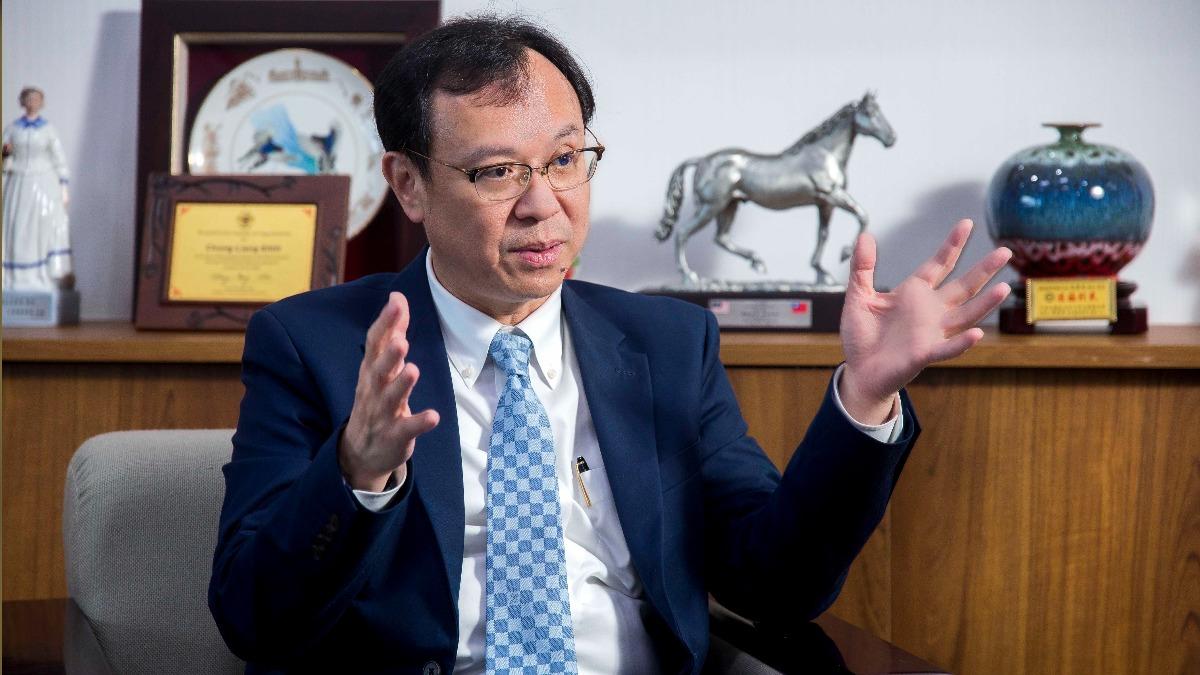TAIPEI (TVBS News) — Nearly 30 years after its inception, the National Health Insurance (NHI) boasts extremely high public satisfaction, yet it is steering the healthcare system toward collapse. In an interview with Business Today (今周刊), Shih Chung-liang (石崇良), director general of the National Health Insurance Administration, unveils four critical solutions at this decisive moment for reform.
Upon his inauguration, President Lai Ching-te (賴清德), a physician by training, committed to fostering a "Healthy Taiwan," identifying NHI reform as the most pressing and formidable challenge.
As the NHI nears its 30th anniversary, it has ensured equitable medical access for the public. However, amidst an aging population, financial instability issues have emerged. The capitation system suppresses medical service pricing, distorting the healthcare ecosystem and triggering a mass exodus of healthcare professionals, compromising the quality of care and health outcomes. At this pivotal time for reform, Director Shih, in his interview with Business Today, lays out four major reform initiatives.
Removing the 6% NHI Rate Cap to Ease Financial Burdens for Younger Generations
"The financial challenges of the NHI are the most difficult to resolve, as raising premiums is a sensitive issue," admits Shih. Taiwan's health expenditure as a percentage of its Gross Domestic Product (GDP) is relatively low compared to the Organization for Economic Co-operation and Development (OECD) average of 9.2%; Taiwan stands at about 7%, trailing by two percentage points. Meeting this gap requires an investment of approximately NT$460 billion, a goal that demands “significant effort and cannot be achieved overnight.”

In examining the NHI's financial structure, 80% of its revenue comes from general premiums paid by salaried workers, with supplementary premiums and government contributions accounting for the remaining 20%. Shih believes that future funding should be more diversified, perhaps through alternative taxation measures similar to Japan's use of consumption tax, rather than placing undue financial pressure on younger and middle-aged generations, a practice that would defy intergenerational justice.
In addition to broadening the NHI's financial base, spending on preventive healthcare, cancer screenings, and adult health examinations overseen by the Health Promotion Administration (國健署) also needs to increase. Especially as the number of cancer patients rises, funding for cancer medications could be allocated by the government to prevent excessive reliance on premiums. "To catch up to the OECD average and close the two percentage point GDP gap, diverse investments are required," Shih notes.
Resetting Medical Payment Standards and focusing on Per-Person Primary Care
However, increasing medical investment raises another issue: how should resources be appropriately allocated?
The NHI payment system is widely regarded as flawed and has been criticized by the medical community, which is advocating for comprehensive adjustments, especially in the aftermath of a pandemic that has seen a significant exodus of medical personnel. "The current NHI payment standards, adopted from the labor insurance system 29 years ago, fail to accurately reflect the costs of various medical services," Shih confesses. "These payment points have been only marginally adjusted over the years without significant reform."
"Now, we must reassess the payment standards based on actual costs," Shih says. He reveals that the National Health Insurance Administration has commenced research to adjust the Resource-Based Relative Value Scale (RBRVS), aiming to redefine payment standards across various medical services.

Beyond reevaluating the pricing of services, however, there needs to be a rethinking of the payment methods to ensure a more effective use of limited resources.
Shih presents two cases to illustrate the current contradictions: one patient with an inflamed gallbladder receives effective, complication-free surgery and is quickly discharged; another suffers from a delayed diagnosis leading to a ruptured gallbladder, poor surgical outcomes, and a lengthy hospital stay. Under the NHI's "fee-for-service" system, the latter scenario results in higher compensation. "Improving patient health actually reduces hospital revenue. Who then is incentivized to perform well?" he asks.
Thus, in the realm of primary patient care, Shih advocates for a shift toward "per person payment," setting different costs for different risks like diabetes, hypertension, and kidney disease, and allocating a fixed amount for hospitals to manage. If doctors can reduce patient visits, their income remains stable, potentially increasing as they save on medical costs. "Looking ahead, the management of basic chronic illnesses should evolve in this direction—healthier patients should correlate with higher institutional revenues."
Taiwan Approaches Super-Aged Society Status, Shifts Resources to Early Disease Intervention
Next year, Taiwan will transition into a super-aged society, with over 20% of the population being 65 or older, which will inevitably lead to substantial increases in medical costs. "If health insurance focuses solely on disease management, it adopts a purely defensive stance, and medical expenditures will continue to escalate," says Shih. "To curb the rapid escalation of medical costs, it's imperative to reallocate health insurance resources to the early stages of disease, rather than waiting for severe illnesses to develop."
NHI and Health Promotion Admin. Enhance Cancer Screenings, Aiming for Better Outcomes
The National Health Insurance Administration plans to enhance its cancer screening programs by establishing the "Family Medicine Big Platform" by the end of this year. This platform will consolidate existing personal health data, including preventive healthcare and cancer screening information and personal input of physiological measurements. Utilizing digital tools for case tracking and management, the system will actively notify doctors of abnormal findings, helping to identify individuals at high risk. The platform, intended for use by healthcare institutions participating in the Family Medicine Program, is expected to benefit approximately 6 million people.
Moreover, with one in two Taiwanese citizens suffering from a chronic condition, Shih highlights the importance of addressing "the three highs" — high blood pressure, high cholesterol, and high blood sugar — which can lead to more severe health issues like heart attacks and strokes. "To alter this trajectory of illness, proactive intervention is essential, with a particular focus on managing Metabolic Syndrome," he notes.

In the second half of last year, the National Health Insurance Administration launched a prevention and treatment initiative for Metabolic Syndrome, targeting early intervention for individuals aged 20 to 64. This program emphasizes lifestyle modifications through diet, exercise, and environmental changes. Currently, over 2,500 healthcare institutions across Taiwan participate in this initiative, with more than 180,000 individuals enrolled.
For chronic diseases, the administration has previously introduced shared care programs for conditions such as diabetes and Chronic Kidney Disease (CKD). However, Shih points out that many of these programs overlap in their management approaches. "In the future, we should focus on the individual rather than the disease," he suggests. By implementing the comprehensive Everyone's Doctor Program, patients can receive integrated care within a single institution, enhancing the efficiency and effectiveness of medical services.
Shih also notes a significant increase in hospital outpatient visits in recent years, with the rate reaching 58.4% by 2023 and the average number of visits per person rising to 7.9. Cancer patients have shown the fastest increase in these statistics. In 2022 alone, the number of cancer patients exceeded 830,000, with medication costs amounting to NT$39.2 billion. These rising treatment expenses represent a growing burden on the health insurance system.

"However, this trend can be reversed through effective cancer screening," Shih asserts. He cites current statistics showing that 80% of breast cancer cases are diagnosed at early stages one and two, whereas over 50% of lung cancer cases are identified at the more advanced stage four. The costs of treating later-stage cancers are substantially higher than those for earlier stages. Therefore, the National Health Insurance Administration in collaboration with the Health Promotion Administration, will enhance cancer screening and early diagnosis to reduce healthcare expenditures and improve patient survival rates.
Since assuming leadership of the National Health Insurance Administration in February of the previous year, Shih has proposed a comprehensive five-point reform agenda for the health insurance system. Over a year later, some of these initiatives are actively being implemented, while others are still garnering societal consensus. From adjustments in premiums to reviews of payment methods and the integration of chronic disease management, each decision impacts both healthcare providers and the public. Navigating these reforms is challenging, but it is imperative for the government to lead the way in these transformative efforts.










